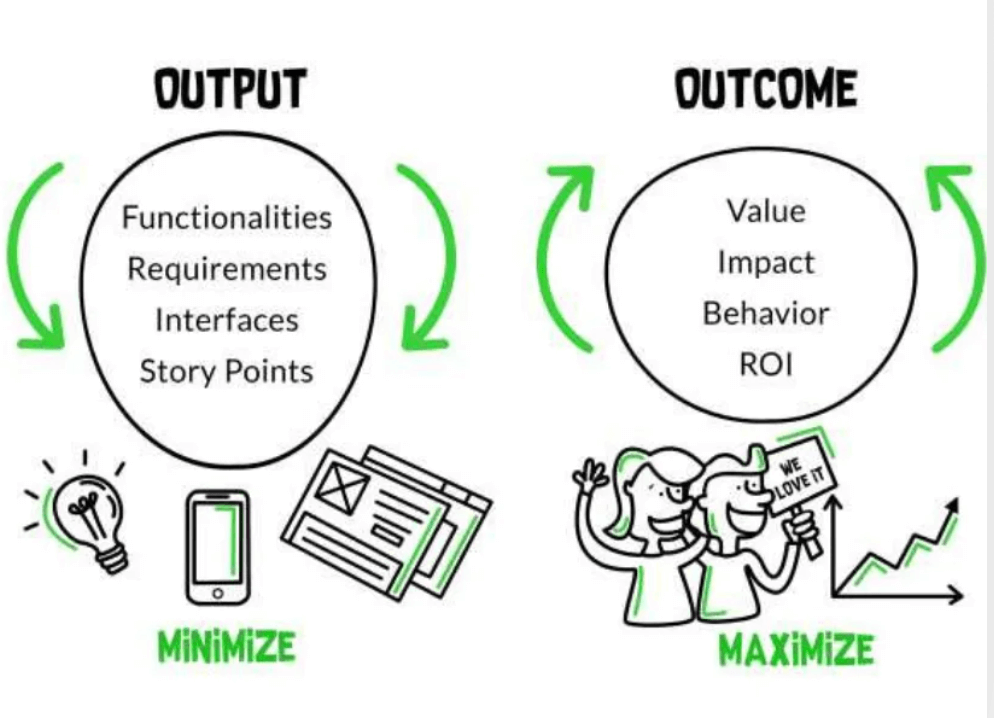
What outcomes your output is producing?
When we delve into the realm of software development, our influence extends to the world, albeit possibly only a fraction of it. The true measure of our success lies in the discernible shifts in behavior that pave the way for tangible business outcomes. These outcomes might entail simplifying the lives of specific user groups by enhancing their work efficiency or assisting them in their family care responsibilities.
Outputs play a crucial role in attaining these outcomes, but it’s essential to recognize that not all outputs lead to the desired outcomes. Therefore, having a clear understanding of the desired outcomes is pivotal when planning the required outputs. Experimentation with outputs can be valuable; by delivering a small amount of work and measuring it against the desired outcome, we can assess whether the output effectively contributes to the outcome.
In the context of OKRs (Objectives and Key Results), the Objective signifies the overarching impact sought by the business, often embodying a high-level shift in value, such as increased profits, enhanced customer retention, or heightened loyalty. Key Results may pertain to either outcomes or outputs, but a well-crafted Key Result should be designed to propel the desired outcome.
To illustrate the relationship between outputs and outcomes, consider a scenario where you’re hosting a dinner party with the following desired outcomes:
- Guests enjoy the party.
- Guests opt for a second serving.
- Guests express a willingness to return for future gatherings.
To achieve these outcomes, the outputs might involve:
- Serving multiple courses of food.
- Ensuring the meals are served hot and on time.
- Facilitating engaging conversations.
In this example of hosting a dinner party, the inputs include the time spent preparing the food and the cost of groceries. The outputs encompass the number of courses served. The outcome is reflected in the number of guests who genuinely enjoyed the meal, resulting in the impact of having happy friends.

However, if guests do not take second servings or if the conversations become dull and fail to engage the guests, even if the desired outputs were achieved, the time and money invested would ultimately go to waste. Outputs hold value only when they contribute to a positive outcome.
In the business world, achieving customer satisfaction is the outcome, leading to the impact of revenue generation. Hence, the objective is to find ways to streamline operations, minimizing resource utilization and expenses, all while maximizing the intended outcomes and overall impact.